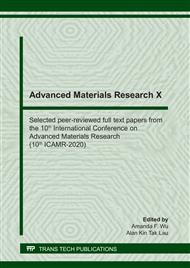p.182
p.187
p.193
p.198
p.209
p.217
p.223
p.228
p.235
A Building Envelope Coating Provides Radiative-Cooling Effect for Subtropics
Abstract:
The primary source of heat in building envelopes in subtropical regions is solar radiation. As global warming worsens, the building insulation is receiving an increasing amount of attention.We developed a coating material with radiative cooling potential and conducted an experiment on a reduced scale to investigate the radiative-cooling performance of bare concrete and concrete coated with UU500, an inorganic insulation coating, under artificial daylight and after the daylight lamps were turned off. The results indicate that UU500 has radiative-cooling effects. We calculated the thermal transmittance coefficient Ui of the coating and presented a radiative cooling coefficient Ex to modify the U-value formula defined in ISO 9869-1: 2014. Coatings with higher Ex values should be promoted and developed to provide the materials industry with a better theoretical foundation for coating development, which enlightened a new approach for building energy saving strategy.
Info:
Periodical:
Pages:
209-214
Citation:
Online since:
July 2020
Authors:
Price:
Сopyright:
© 2020 Trans Tech Publications Ltd. All Rights Reserved
Share:
Citation:


